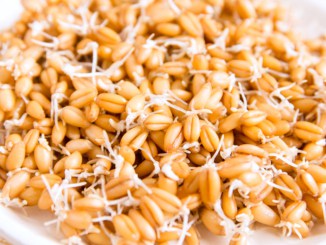
While other continents have cultivated hazelnuts for centuries, North America has a relatively young relationship with them. In the mid-1800s, an English settler planted the first hazelnut tree in the Pacific Northwest. Now, the hazelnut is Oregon’s official state nut — and it goes by two names: hazelnut and filbert. Some believe the name “filbert” originated from a German word and describes the nuts as having a “full beard.” Other historians claim the moniker is derived from St. Philibert, whose feast day coincides with the nuts’ ripening in England. The name “hazelnuts” likely originated from the English word “haesel,” which means bonnet.
Most hazelnuts sold in stores have their brown, papery skin still attached. The skin is nutritious but can taste bitter. Roasting at a low temperature, about 350°F for 10 to 15 minutes, intensifies flavor and helps loosen the skin to easily remove some of it by rubbing with a kitchen towel. Once roasted, hazelnuts can be enjoyed whole, sliced or chopped in salads, soups, pasta dishes and desserts. They also can be ground into a flour or paste to make desserts and savory pie crusts, or to coat fish and chicken. Hazelnut oil can be used as a base for salad dressings or as a finishing drizzle for desserts and savory dishes, including game meats, roasted vegetables and soups.
Nutritional Qualities of Hazelnuts
Compared to other nuts, hazelnuts have one of the lowest proportions of saturated fat and one of the highest amounts of monounsaturated fats. Monounsaturated fats help improve blood cholesterol levels, which can help lower the risk of heart disease. A single 1-ounce serving of hazelnuts (about 19 to 21 nuts) supplies a healthy dose of vitamin E, about 4 grams of protein and close to 3 grams of fiber, plus calcium, magnesium, potassium and folate.
Hazelnuts, specifically their skins, have some of the highest amounts of proanthocyanidins, or PACs, among any tree nut. PACs are polyphenols that act as powerful antioxidants and may help reduce the risk of cardiovascular disease.
Using Hazelnuts in Foodservice
The country’s largest producer of hazelnut trees is the Pacific Northwest, known for its temperate climate and rich soil. Growing season starts in the winter, with nuts reaching maturity during the summer. Harvesting occurs at the end of September and October, when nuts begin to fall from the trees. Buy whole nuts and store in an airtight container in a cool place, chopping or grinding just before use. To lengthen shelf life, roast, cool and then freeze nuts in an airtight, freezer-safe container, where they’ll be safe for up to one year.
Sara Haas, RDN, LDN, is a Chicago-based dietitian and chef. She is a Stone Soup blogger and author of sarahaasrdn.com.
Shaved Root Vegetable Salad
Ingredients
- [40 grams] 3 tablespoons (45 milliliters) avocado oil
- [30 grams] 2 tablespoons (30 milliliters) white balsamic vinegar
- [15 grams] 1 tablespoon (15 milliliters) fresh orange juice
- [5 grams] ¾ teaspoon kosher salt, divided
- [280 grams] 2 medium (about 10 ounces) parsnips
- [170 grams] 2 large (about 6 ounces) carrots
- [115 grams] 1 small (about 4 ounces) turnip
- [140 grams] 1 medium (about 5 ounces) golden beet
- [140 grams] 1 medium (about 5 ounces) red beet
- [30 grams] ¼ cup hazelnuts, toasted and chopped
Directions
- In a small bowl, whisk oil, vinegar, orange juice and ¼ teaspoon salt to make vinaigrette.
- Wash and peel parsnips, carrots, turnip and beets. Using a mandoline, V-slicer or flat vegetable slicer, thinly slice vegetables.
- Place red beets in a small bowl and all other vegetables in a medium bowl. Sprinkle remaining salt into the two bowls and stir.
- Spoon 4 tablespoons vinaigrette over mixed vegetables and lightly toss to coat. Pour remaining dressing on red beets and stir to coat. Cover and refrigerate both bowls for two hours.
- Arrange red beets on a platter or 4 individual plates; drizzle with any remaining vinaigrette from the bowl. Top beets with remaining vegetables and garnish with hazelnuts. Serves 4.
Nutrition Information
SERVING SIZE: 1½ cups
CALORIES 284; TOTAL FAT 19g; SAT. FAT 2g; CHOL. 0mg; SODIUM 452mg; CARB. 28g; FIBER 7g; SUGARS 14g; PROTEIN 5g; POTASSIUM 751mg; PHOSPHORUS 136mg








